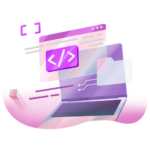
According to Azul customer insights, the unaided average Oracle Java migration takes 6–9 months. Using traditional software asset management (SAM) tools, discovering and classifying JVMs is a fragmented and manual process. JVM Inventory, a new feature of Azul Intelligence Cloud, addresses the complexity and risk of migrating off Oracle Java. Combined with Azul’s Migration Toolkit (AMT, Azul’s scanner that finds JDKs which are present) and/or other SAM discovery tools, Azul’s Migration Advisory experts and channel partners can use JVM Inventory’s precise, runtime-level visibility to dramatically accelerate classification, migration and tracking of Oracle Java instances.
In January 2023, Oracle quietly introduced per-employee pricing for Oracle Java SE. Ever since, they have been incrementally moving Oracle Java subscribers to this new pricing model, which has proven to be 2-5 times more expensive than their legacy Java pricing. As a result, 88% of Oracle Java subscribers are considering moving to another Java provider [Azul, State of Java Survey and Report, 2025].

Azul customer insights indicate that the unaided average complete Oracle Java migration takes 6–9 months, largely because of the fragmented and manual process of discovering and classifying JVMs using traditional SAM tools. This is phase one in Azul’s three-phase migration process according to Azul Deputy CTO Simon Ritter’s definitive book, OpenJDK Migration for Dummies. Creating a Java inventory early in the Java migration process enables organizations to efficiently and accurately classify JVMs that need an Oracle subscription, identify which JVMs can be removed, and establish which ones should be replaced with an equivalent OpenJDK alternative. Cumbersome processes put organizations at risk of delays, errors, and increased risk of non-compliance or unnecessary licensing costs.
Introducing JVM Inventory, a new Java discovery tool

JVM Inventory, a new feature of Azul Intelligence Cloud, dramatically accelerates classification, migration, and tracking of Oracle Java instances. Leveraging this insight, organizations can slash months off OpenJDK migrations and help ensure ongoing Oracle Java licensing compliance and audit defense. It uses information that is only available at runtime to map and monitor which Oracle JVMs are actually being used. Teams can perform Java migrations, remove Oracle Java instances, and keep Oracle Java out.
Accelerate Java Discovery and Classification
Azul’s Migration Advisory experts and/or channel partners use JVM Inventory, combined with the AMT and sometimes other SAM tools, when working with enterprises. JVM Inventory provides an accurate, complete view of their Oracle Java footprint that is unattainable by traditional tools alone.
Because JVM Inventory gathers data directly from the JVM, it can receive runtime insights including precise details on JVM vendor, version, install path, and the applications running on it. Azul’s Migration Advisory experts and ITAM/SAM services partners use this data to validate and enrich reports, find running Oracle Java instances even in dynamic container environments, and identify unused Oracle instances for removal. With actionable intelligence that clearly identifies which Oracle JVMs are in use and subject to Oracle’s commercial terms (i.e. not covered by bundled licenses), enterprises can confidently accelerate their migration off Oracle Java.
Remove Oracle Java instances
Interpreting reports from SAM tools can be challenging, which in turn makes accurately grouping and prioritizing Oracle JVM installations for removal challenging.
Organizations can use the latest Oracle Java Long-term Support (LTS) version (currently 21) for free, under the terms of the Oracle No-Fee Terms and Conditions License. But when their Oracle renewal approaches and they are no longer on the latest LTS, they can be subject to per-employee pricing and the accompanying cost increases, putting them under significant time pressure. Slow, incomplete, or inaccurate classification of one small application on Oracle JVMs that require a commercial subscription can mean millions in unnecessary license fees.
An enterprise’s Java estate can contain tens of thousands of Oracle JVMs. JVM Inventory could be the difference between successfully migrating off Oracle or signing an expensive renewal.
Keep Oracle Java out
Once Oracle Java is eliminated, JVM Inventory helps ensure Oracle Java stays out for compliance and possible audit defense. Through continuous runtime detection, organizations can instantly identify and act on regressions – such as new Oracle JVMs being run – before they create audit risk. By maintaining an up-to-date, runtime-level inventory, teams can automate alerts, streamline replacement of new Oracle JVMs for compliance, and have the intelligence they need to help confidently defend against possible audits.
Features and benefits of JVM Inventory

Azul’s Migration Advisory experts and their ITAM/SAM partners use JVM Inventory in combination with AMT or other SAM tools to deliver a complete solution that enables organizations to:
- Discover and inventory their Oracle Java instances.
- Accurately classify and prioritize these installations for replacement or removal.
- Enable their teams to migrate efficiently off Oracle by continuously tracking their JVMs.
- Help ensure ongoing compliance, once migrated off, by detecting any new running Oracle Java instances throughout the enterprise.

The benefits of JVM Inventory, when combined with the Azul Migration Toolkit or other SAM tools, include:
- Provides the most accurate, complete Oracle discovery information for migration.
- Reduces the risks of a company’s migration with quicker, more accurate classification of their Oracle Java instances.
- Accelerates application owner identification and notification that Oracle JVMs will be replaced.
- Ensures that Oracle Java stays out for compliance and audit defense
Learn more about JVM Inventory
JVM Inventory is the first Java discovery tool that finds runtime-level instances of Oracle JVMs, removes them before renewal, and keeps them out. It provides the most accurate source of Java vendor, version, install path, and other critical migration information. JVM Inventory works with Azul Platform Core to help organizations stay in compliance and speeding up their migration. Learn more about JVM Inventory.






